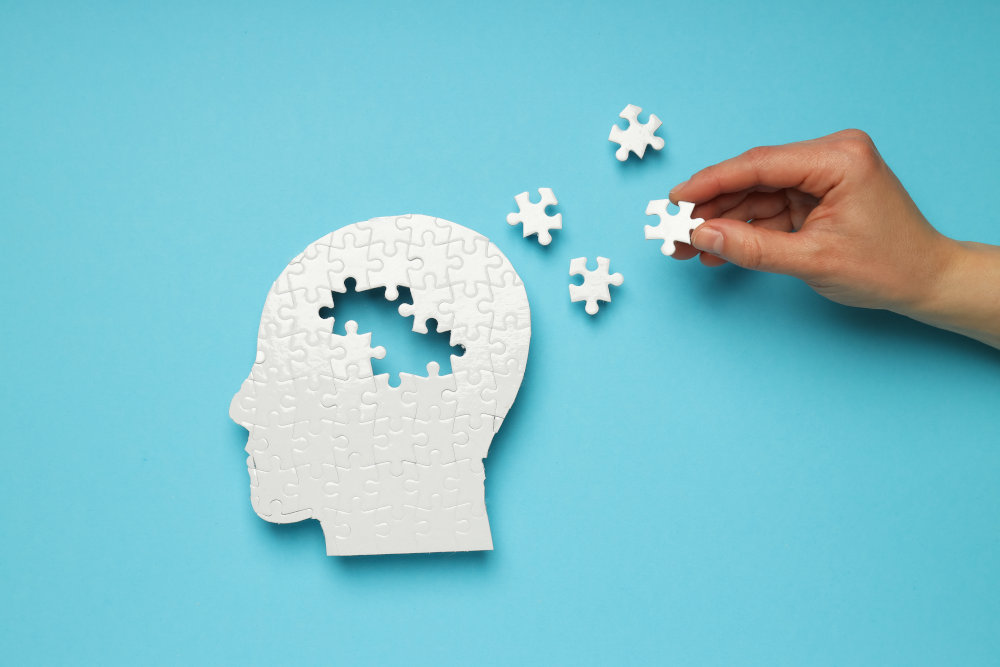By Christine Saari, MA, E-RYT, C-IAYT
What if your doctor prescribed a “medicine” that supports optimal health, feels like a spa day for your immune system, renews your zest for life, and has no side effects? Would you try it?
Meet therapeutic yoga nidra – the free, transformative practice that does just that. The US Army and Department of Defense are using yoga nidra to treat PTSD, and as research continues to expand our knowledge of its vast health benefits, you just might discover healthcare professionals recommending therapeutic yoga nidra as adjunct care when traditional interventions fall short.
KEY POINTS
- This article explores how therapeutic yoga nidra is used to transform health outcomes, addressing physiological changes and neurological changes.
- Yoga nidra promotes allostasis, healing states linked to increased delta brainwaves, reduced chronic inflammation, and immune modulation.
- Yoga nidra reshapes brain function, patterning, and structure.
- Yoga nidra can be applied to a broad array of health conditions, including PTSD, insomnia, fatigue, depression, anxiety, physical pain, autoimmune diseases, chronic diseases, and injuries.
- Consulting a qualified yoga therapist is crucial for personalized Yoga nidra, optimizing health outcomes through essential customization for increased efficacy.
Therapeutic yoga nidra is a unique and powerful technique that more doctors are discovering and recommending to their patients. This article unveils the remarkable versatility of yoga nidra in addressing various health conditions. Read on to discover how using yoga nidra as medicine has the potential to revolutionize our approach to health and healing, and why yoga therapists frequently recommend it to help clients with a wide range of health issues.
Yoga Nidra’s Transformative Impact on Health Outcomes
A Deep Rest Therapy
Picture a space where you willingly embark on a journey that parallels the trance-like state of hypnosis, a mental realm where deep relaxation ushers you into a hypnagogic state. This is the essence of yoga nidra, where rest and awareness intertwine, offering a unique path towards optimal health.
Yoga nidra, often referred to as “yogic sleep,” is a type of guided meditation that is performed in a passive position, such as lying down or reclining. Yoga nidra combines elements of conscious relaxation, heightened awareness, and skillful subtle perception. The primary objective of yoga nidra is to facilitate a state of “deep rest” (also known as Non-Sleep Deep Rest) while maintaining mental clarity and awareness.
the Body-Brain Connection
However, yoga nidra is more than just a glorified nap. Emerging medical and neuroscience investigations are just scratching the surface of its compelling impact on the dance between our body-brain interactions.
There’s growing evidence that yoga nidra can rejuvenate our physiological well-being and reshape detrimental neurological patterns. These dual facets can be leveraged and directed to target particular health objectives linked to a diverse range of medical conditions and mental health issues.
To start, let’s find out how yoga nidra affects the body’s systems on a physiological level.
Yoga Nidra’s Physiological Impact
In this section, we’ll explore the first dimension of yoga nidra as medicine: its ability to support healthy physiological functioning in the human body.
We’ll look at how yoga nidra supports the body’s systems for improved resilience, better functioning through quality sleep, and improved immune function.
How Yoga Nidra Supports Allostasis for Improved Resilience
Yoga nidra’s role is both preventive and restorative in terms of influencing health outcomes. Yoga nidra acts as a deceptively simple yet intricately advanced practice that influences the body’s systems on multiple levels.
The first of those is allostasis. The idea of allostasis may be new to some, but it’s worth a pause to learn about its role in improved resilience. Let’s take a look at how this works.
What is Allostasis?
Allostasis is a fundamental concept in the realm of physiology, referring to the body’s remarkable ability to maintain stability and overall health through communication between the various interconnected systems within it.
Allostasis is challenged by chronic stress1 and the dominance of the sympathetic nervous system2. This continuous pressure can lead to “homeostatic overload,” taxing physiological systems and leading to negative effects on the human body3.
What is Resilience?
Resilience is a similar, but distinct, concept from allostasis. Resilience represents your body’s ability to maintain its well-being despite challenges, while allostasis encompasses the ongoing processes that help you achieve that state of resilience4.
Supporting Resilience By Bolstering Allostasis
Yoga nidra enhances resilience and allostatic balance primarily by mitigating chronic stress. A review of research underscores its remarkable efficacy in reducing stress markers5. Multiple studies conducted in academic and online settings demonstrate substantial reductions in stress levels when individuals adopt regular yoga nidra practice(6, 7, 8, 9). It’s worth noting that these positive results were consistently observed when yoga nidra was regularly integrated into one’s routine, rather than being employed as a one-time intervention. This consistent incorporation of the practice is instrumental in explaining how yoga nidra may function to bolster resilience by reducing homeostatic overload and facilitating allostatic balance.
Additionally, yoga nidra has been shown to instill new patterns of “parasympathetic dominance” within the autonomic nervous system, further enhancing its positive impact10.
While the precise underlying mechanisms are not yet fully understood, recommending consistent timed intervals of yoga nidra appears to be a promising approach for achieving improved health outcomes. This therapeutic technique demonstrates potential as both a preventive and restorative measure.
In the following section, we will delve into how yoga nidra supports overall bodily function through facilitating high-quality rest.
Effects on Sleep, Insomnia, and Fatigue
If you’ve ever experienced the joys of caring for a newborn, you’re probably all too familiar with how sleep loss can wreak havoc on your health. Worse than those memorable college all-nighters, the drain of chronic sleep troubles can take a toll on both your physical and mental well-being.
The Problem With Sleep Loss
The effects of sleep loss are real. The medical literature on sleep says that chronic sleep dysfunction can lead to the following11:
- Impaired cognitive function
- Mood disorders
- Weight gain
- Cardiovascular issues
- A weakened immune system
- Diabetes risk
- Hormonal imbalances
- Reduced physical performance
- Heightened accident risk
- Gastrointestinal disturbances
Mood disorders, anyone? This exhaustive (pun intended) list provides us with a clue, hinting at why yoga nidra is so adept at revitalizing the functioning of the body’s systems when they become drained due to sleep deprivation, medical procedures, or health issues.
The association between fatigue and adverse health outcomes underscores the importance of rest and quality sleep.
This is where yoga nidra takes center stage.
Yoga Nidra Increases Delta Brainwaves
Yoga nidra has been shown to increase delta brainwave states(12, 13). Delta brainwaves happen during deep sleep, and they play a crucial role in the release of human growth hormone, which is associated with increased muscle mass, bone density, reduced stress hormones, improved immune function, and suppressed effects of aging14.
Yogis have long suspected that yoga nidra can assist with sleep, and recent studies confirm this belief: a short daily dose of yoga nidra can actively improve stress levels, sleep quality, and overall well-being, with lasting effects15. Sleep studies strengthen the connection between hypnagogic practices like yoga nidra and deep healing16, providing additional backing to the crucial role of these practices in actively regulating the body’s physiological processes associated with sleep, insomnia, and fatigue.
By fostering delta brainwave entrainment, yoga nidra empowers individuals dealing with chronic sleep deprivation to actively participate in their healing process. This is great news for people struggling with exhaustion related to illness, injury, or life circumstances.
Yoga Nidra’s Influence on Immune Health and Inflammation
Next, we’ll look at how therapeutic yoga nidra supports improved immune function and its ability to reduce systemic inflammation – arguably the most exciting aspects of using yoga nidra as medicine.
Immune Modulation
The body’s immune system plays a vital role in safeguarding our health. In emerging research, yoga nidra has demonstrated its potential as an effective tool for immune modulation17, especially in the context of autoimmune diseases18, and as adjunct care for disease states19.
Why and how yoga nidra works to support healthy immune function is still unclear; however, yoga nidra’s role in managing chronic systemic inflammation offers some insight.
The Body’s Inflammatory Response and Systemic Inflammation
Inflammatory responses are the body’s natural reactions to infections and injuries, serving as protective mechanisms. Recent research provides a nuanced view on the role of inflammation in the body’s immune response: Inflammation isn’t always bad; it’s a natural part of the body’s efforts to maintain health20. It plays a role in defending against infections, regulating organs, and other essential functions.
Nevertheless, this perspective does not dismiss the well-established medical viewpoint that excessive or prolonged inflammation can contribute to the development of various diseases and health issues.
The Research on Yoga Nidra and Systemic Inflammation
This is where yoga nidra comes into play. By bolstering the function of the body’s immune system to generate a suitable inflammatory response, yoga nidra may alleviate chronic systemic inflammation.
While the mechanisms are not yet fully understood, studies on sleep and inflammation are beginning to unveil how yoga nidra accomplishes these functions by inducing relaxation and prolonging the time spent in brainwave states associated with deep sleep. The research shows a correlation between deep sleep and the reduction of systemic inflammation:
- In a 2015 meta-analysis on research on the impact of sleep on inflammation markers, the authors concluded that poor sleep can lead to more inflammation in the body21.
- Another study found that inflammatory markers play a significant role in controlling our sleep patterns22. It showed that not getting enough sleep, even for a short time, can disrupt the balance of these inflammatory markers in our bodies. These inflammatory markers also affect how our body handles sugar, blood pressure, and metabolism. They even affect the way our body responds to diseases like diabetes, heart problems, and heart failure.
This research underlines the importance of getting good, restful sleep for reducing inflammation. It highlights how sleep quality and duration are crucial for our overall well-being.
By promoting deep relaxation and delta brainwave states, yoga nidra holds the potential to play a crucial part in fostering overall well-being. It does so by addressing the intricate interplay between sleep and inflammation, ultimately promoting a robust immune system.
The Body-Brain Benefits of Yoga Nidra
We’ve delved into the impact of therapeutic yoga nidra on our body’s physiological processes, highlighting its role in promoting allostasis, enhancing sleep, and fortifying our immune function.
While the physical benefits of yoga nidra are indeed remarkable, the mental advantages are equally compelling. In the upcoming section, we will explore the intriguing neurological impacts of yoga nidra, shedding light on how this practice can reconfigure the brain to enhance mental health outcomes.
Yoga Nidra’s Neurological Impact
Have you ever heard the expression, ‘Change your brain, change your mind’? Well, therapeutic yoga nidra does just that. It’s remarkable how this practice can work wonders for your health, especially when it comes to your brain.
In this section, we’ll delve into the incredible impact of yoga nidra on neurological well-being. Specifically, we’ll explore how yoga nidra serves as a valuable medical intervention that enhances mental health outcomes, including its role as an adjunct treatment for addiction recovery, chronic pain management, cognitive disorders, and PTSD.
Reshaping the Brain
Yoga and meditation have been shown to influence the brain’s structure and brainwave patterns, creating promising avenues in the realm of cognitive health and mental well-being (23, 24, 25). The transformative power of therapeutic yoga nidra similarly lies in its potential to alter brain structure and shift brain wave patterns significantly, leading to an improved quality of life in patients with mental illness.
Reprogramming the Brain for Addiction Recovery
Therapeutic yoga nidra’s versatile application extends to addressing compulsive and addictive brain patterns. This includes conditions such as OCD, eating disorders, and various forms of addiction. By altering awareness through techniques like cognitive defusion, also known in the yoga world as “witness consciousness”, yoga nidra offers a valuable tool for managing these patterns, aiding in the quest for recovery and improved mental well-being.
Studies have demonstrated that cognitive defusion, a key element of therapeutic yoga nidra adapted for addiction recovery, has been associated with improved outcomes for individuals dealing with conditions like food addiction26. This practice involves observing thoughts as separate from oneself with a sense of curiosity and detachment. Through repeated engagement with these techniques, individuals gain a broader perspective on the relative significance of their thoughts, ultimately diminishing the thoughts’ influence over their reactive behaviors.
The use of cognitive defusion in the form of witness consciousness during therapeutic yoga nidra practice can be particularly beneficial in the context of addiction recovery, enhancing one’s ability to break free from the cycle of compulsive behaviors and foster mental well-being.
Altering Brain Patterns to Manage Pain
Yoga nidra’s impact isn’t limited to mental health: it also extends its influence to the realm of physical pain management. In a study conducted by Rani et al, it was found that therapeutic yoga nidra holds promise in alleviating physical discomfort, particularly pain, among individuals with menstrual disorders27. This research underscores the broader applicability of therapeutic yoga nidra, suggesting its potential as a holistic approach encompassing both mental and physical well-being, thus offering valuable insights for clinicians and healthcare professionals.
Through its capacity to redirect awareness and reconfigure neurological pain pathways responsible for the development of chronic pain patterns, therapeutic yoga nidra effectively aids individuals dealing with pain, whether caused by medical conditions, injuries, or chronic discomfort.
Reshaping Cognitive Patterns for Mental Health
Witness consciousness or cognitive defusion goes beyond reshaping addictive patterns and managing unwanted behaviors. It plays a pivotal role in addressing maladaptive thoughts and cognitive patterns that are frequently associated with common mental health conditions like anxiety and depression.
By prompting individuals to adopt a more objective perspective on their thoughts, witness consciousness encourages them to expand into a new state of felt perspective. This shift allows them to gradually align with more positive, uplifting mental patterns. Over time and with consistent practice, these new patterns become increasingly rewarding, eventually eclipsing deeply ingrained, maladaptive thought patterns. This transformative process is underpinned by deep relaxation, which serves as the source of the rewarding sensation that reinforces this new patterning.
Moreover, yoga nidra has been shown to positively affect outcomes for individuals with anxiety28.
In essence, yoga nidra’s therapeutic potential lies in recognizing and addressing these patterns, providing a structured path towards recovery and enhanced mental well-being.
Healing PTSD through Nervous System Modification
Research funded by the US Army and Department of Defense on the application of yoga nidra as medicine in combat veterans with PTSD has paved the way for its therapeutic use in addressing trauma of all kinds. To understand its effectiveness, it’s crucial to delve into how trauma affects the autonomic nervous system, which plays a significant role in the development and persistence of trauma symptoms.
Trauma can lead to maladaptive physiological and neurological responses within the autonomic nervous system, including the sympathetic “fight or flight” response or the dorsal vagal parasympathetic “freeze” response. Both of these responses are signatures of trauma, and when they linger in an unwanted way, they can contribute to the development of PTSD29.
The Research on Therapeutic Yoga Nidra for PTSD
A qualitative feasibility study by Stankovic explored the potential of yoga nidra in transforming trauma related to combat experiences. Stankovic’s findings suggest that yoga nidra enables individuals to access their subconscious, aiding in the resolution of these autonomic nervous system responses and their associated physiological symptoms30.
Another study assessed the effectiveness of yoga nidra in reducing symptoms associated with sexual trauma, including military sexual trauma, in women seeking psychotherapy services at a Department of Veterans Affairs medical center. The findings revealed significant reductions in PTSD symptoms, self-blame thoughts, and depression, as well as reduced body tension, improved sleep quality, better management of intrusive thoughts, enhanced stress-coping abilities, and increased feelings of joy31. This preliminary study highlights the promise of using yoga nidra as a therapeutic approach for women with sexual trauma.
Therapeutic Yoga Nidra for Trauma
By offering a neuro-somatic meditation technique, yoga nidra provides a promising approach for addressing the physiological and psychological aspects of trauma, such as emotional dysregulation and heightened reactivity. These findings underscore the potential of therapeutic yoga nidra as a valuable tool in the treatment and healing of trauma, extending hope and restoration to those who have experienced its burdens.
The Prescription: A Yoga Therapy Approach
In the realm of Yogic philosophy, the state of consciousness known as “turiya” represents a profound and transcendent dimension of human awareness. Turiya is often described as the fourth state of consciousness, beyond the waking, dreaming, and deep sleep states. It signifies a state of pure, unadulterated consciousness, where the individual experiences a profound sense of interconnectedness with the universe, and a deep inner peace.
In the practice of yoga nidra, we leverage the wisdom of Yogic philosophy to create a holistic assessment framework. This framework allows us to tailor a yoga nidra practice that guides individuals towards the attainment of turiya, fostering a heightened state of consciousness, and unlocking the immense healing potential associated with finding alignment with this state.
Yoga Nidra as Medicine in Yoga Therapy
In the field of yoga therapy, yoga nidra is a powerful therapeutic tool. Yoga therapists draw upon frameworks from yoga philosophy to tailor this practice to each individual. They engage their clients in an educational process, fostering skill-building toward turiya states and personal empowerment.
Customizing Yoga Nidra Delivery for Therapeutic Use
Incorporating yoga nidra into yoga therapy allows for a personalized approach that can be tailored to meet the specific health needs and personal preferences of individuals seeking its therapeutic benefits. The customization of yoga nidra extends to various aspects of the practice and contributes to its efficacy by increasing the likelihood of a client practicing regularly.
Yoga therapists frequently utilize customized yoga nidra as a therapeutic tool. They often avoid using pre-written scripts to tailor the practice for individual needs. When designing therapeutic yoga nidra sessions, they consider several factors, such as:
- the bodily position (seated or supine),
- music preferences,
- speaking pace,
- space between instructions,
- language style,
- and choice of active or passive language.
Yoga therapists may recommend preparatory practices and usually provide custom audio recordings along with a prescribed dosage and frequency of practice. They always screen for physical or psychological contraindications, such as sleep apnea or trauma-related aversions. This personalized approach enhances the practice’s efficacy and encourages regular engagement, making yoga nidra a valuable therapeutic tool in yoga therapy.
Find a Yoga Therapist
When it comes to harnessing the full therapeutic potential of yoga nidra, consulting a qualified yoga therapist is key. These professionals possess the expertise required to craft a customized yoga nidra practice tailored to address specific health concerns and individual preferences. This level of customization extends beyond simple choices like lying supine or prone; it delves into the intricacies that can significantly impact the practice’s effectiveness.
For instance, a yoga nidra session designed to alleviate anxiety will differ from one tailored to manage depression. Similarly, the timing and sequence of a yoga nidra session for insomnia will vary compared to one aimed at combating chronic fatigue. It’s the precision in applying these practices that truly matters in terms of their efficacy.
Yoga therapists are invaluable resources for individuals seeking a tailored yoga nidra experience. They can expertly guide you or your patients on the journey to improved well-being, offering personalized recordings and recommendations to address specific needs. By collaborating with a yoga therapist, you can tap into a wealth of knowledge and experience, fully leveraging yoga nidra as a powerful therapeutic tool for enhanced mental, emotional, and physical health. Healthcare providers can also benefit from this guidance, ensuring the best outcomes from this therapeutic technique.
Conclusion
The use of yoga nidra as medicine offers a promising path towards improved health and healing. As healthcare professionals, it is essential to recognize the potential of yoga nidra as a therapeutic tool. By referring patients to qualified yoga therapists, we can ensure that individuals receive personalized and effective yoga nidra practices tailored to their specific health needs. This holistic approach has the potential to revolutionize the way we address health conditions, and we encourage physicians and healthcare providers to explore this complementary avenue for the benefit of their patients.
References
- Romero, L. M., Dickens, M. J., & Cyr, N. E. (2009). The reactive scope model — A new model integrating homeostasis, allostasis, and stress. Hormones and Behavior, 55(3), 375-389. https://doi.org/10.1016/j.yhbeh.2008.12.009
- Thayer, J. F., & Sternberg, E. (2006). Beyond Heart Rate Variability: Vagal Regulation of Allostatic Systems. Neuroendocrine and Immune Crosstalk, 1088(1), 361-372. https://nyaspubs.onlinelibrary.wiley.com/doi/abs/10.1196/annals.1366.014
- Romero, L. M., Dickens, M. J., & Cyr, N. E. (2009). The reactive scope model — A new model integrating homeostasis, allostasis, and stress. Hormones and Behavior, 55(3), 375-389. https://doi.org/10.1016/j.yhbeh.2008.12.009
- Waugh, C. E., & Sali, A. W. (2023). Resilience as the Ability to Maintain Well-Being: An Allostatic Active Inference Model. J. Intell, 11(8), 158. https://www.mdpi.com/2079-3200/11/8/158
- Pandi-Perumal, S. R., et al. (2022). The Origin and Clinical Relevance of Yoga Nidra. Sleep and Vigilance, 6, 61-84. Published 23 April 2022. https://link.springer.com/article/10.1007/s41782-022-00202-7
- Moszeik, E. N., von Oertzen, T., & Renner, K.-H. (2022). Effectiveness of a Short Yoga Nidra Meditation on Stress, Sleep, and Well-Being in a Large and Diverse Sample. Current Psychology, 41, 5272-5286. Published 08 September 2020. https://link.springer.com/article/10.1007/s12144-020-01042-2
- Eastman-Mueller, H., Wilson, T., Jung, A.-K., Kimura, A., & Tarrant, J. (2013). iRest Yoga-Nidra on the College Campus: Changes in Stress, Depression, Worry, and Mindfulness. International Journal of Yoga Therapy, 23(2), 15-24. https://doi.org/10.17761/ijyt.23.2.r8735770101m8277
- Kumar, K. (2008). A study on the impact on stress and anxiety through Yoga nidra. Indian Journal of Traditional Knowledge (IJTK), 07(3), 401-404. http://nopr.niscpr.res.in/handle/123456789/1700
- Eastman-Mueller, H., Wilson, T., Jung, A.-K., Kimura, A., & Tarrant, J. (2013). iRest Yoga-Nidra on the College Campus: Changes in Stress, Depression, Worry, and Mindfulness. International Journal of Yoga Therapy, 23(2), 15-24. https://doi.org/10.17761/ijyt.23.2.r8735770101m8277
- Eastman-Mueller, H., Wilson, T., Jung, A.-K., Kimura, A., & Tarrant, J. (2013). iRest Yoga-Nidra on the College Campus: Changes in Stress, Depression, Worry, and Mindfulness. International Journal of Yoga Therapy, 23(2), 15-24. https://doi.org/10.17761/ijyt.23.2.r8735770101m8277
- Institute of Medicine (US) Committee on Sleep Medicine and Research; Colten, H. R., & Altevogt, B. M. (Eds.). (2006). Sleep Disorders and Sleep Deprivation: An Unmet Public Health Problem (3rd ed.). National Academies Press (US). https://www.ncbi.nlm.nih.gov/books/NBK19961/
- Brody, K. (2023, March 20). How Yoga Nidra Can Help You Get More Sleep. Yoga Journal. https://www.yogajournal.com/poses/your-brain-on-yoga-nidra/
- Datta, K., Mallick, H. N., Tripathi, M., Ahuja, N., & Deepak, K. K. (2022). Electrophysiological Evidence of Local Sleep During Yoga Nidra Practice. Frontiers in Neurology, 13. https://doi.org/10.3389/fneur.2022.910794
- Gronfier, C., Luthringer, R., Follenius, M., Schaltenbrand, N., Macher, J. P., Muzet, A., & Brandenberger, G. (1996). A Quantitative Evaluation of the Relationships Between Growth Hormone Secretion and Delta Wave Electroencephalographic Activity During Normal Sleep and After Enrichment in Delta Waves. Sleep, 19(10), 817–824. https://doi.org/10.1093/sleep/19.10.817
- Moszeik, E. N., von Oertzen, T., & Renner, K.-H. (2022). Effectiveness of a Short Yoga Nidra Meditation on Stress, Sleep, and Well-Being in a Large and Diverse Sample. Current Psychology, 41, 5272-5286. Published 08 September 2020. https://link.springer.com/article/10.1007/s12144-020-01042-2
- Filcek, M. (2023). Vinci Power Nap® Synchronization Technology – Neuroarchitecture for better sleep, adding Energy for Life, Reducing Stress and Jet Lag, Improving Wellbeing and Body-Mind Regeneration. Helpful for Leaders, Doctors, Soldiers, Children, Drivers, Pilots, Astronauts, People Traveling On Earth And Beyond. Journal of Biotechnology and Biomedicine, 6, 107.
- Kumar, K. (2020). Role of Yoga-nidra in Immunity Development. International Journal of Yoga & Allied Sciences, 9(2), 144-148. https://www.researchgate.net/publication/350965226_Role_of_Yoga-nidra_in_Immunity_Development
- Mishra, B. (2012). The Effect of Yoga Nidra in the Management of Rheumatoid Arthritis. Ancient Science of Life, 32(Suppl 1), Article S118. Published as part of the 5th World Ayurveda Congress 2012, Bhopal, Madhya Pradesh, India, 7-10 Dec 2012. https://www.ncbi.nlm.nih.gov/pmc/articles/PMC3800872/
- Pandi-Perumal, S. R., et al. (2022). The Origin and Clinical Relevance of Yoga Nidra. Sleep and Vigilance, 6, 61-84. https://link.springer.com/article/10.1007/s41782-022-00202-7
- “Inflammation: A Double-Edged Sword for the Immune System.” Yale Medicine Magazine, Winter 2020 – updated May 16, 2022, https://medicine.yale.edu/news/yale-medicine-magazine/article/inflammation-a-double-edged-sword-for-the-immune-system/
- Irwin, M. R., Olmstead, R., & Carroll, J. E. (2016). Sleep Disturbance, Sleep Duration, and Inflammation: A Systematic Review and Meta-Analysis of Cohort Studies and Experimental Sleep Deprivation. Biological Psychiatry, 80(1), 40-52. doi: 10.1016/j.biopsych.2015.05.014. PMCID: PMC4666828, NIHMSID: NIHMS696709, PMID: 26140821. https://www.ncbi.nlm.nih.gov/pmc/articles/PMC4666828/
- Mullington, J. M., et al. (2010). Sleep Loss and Inflammation. Best Practice & Research Clinical Endocrinology & Metabolism, 24(5), 775–784. doi: 10.1016/j.beem.2010.08.014. https://www.ncbi.nlm.nih.gov/pmc/articles/PMC3548567/
- Kora, P., Meenakshi, K., Swaraja, K., Rajani, A., & Raju, M. S. (2021). EEG based interpretation of human brain activity during yoga and meditation using machine learning: A systematic review. Complementary Therapies in Clinical Practice, 43, 101329. https://doi.org/10.1016/j.ctcp.2021.101329
- Desai, R., Tailor, A., & Bhatt, T. (2015). Effects of Yoga on Brain Waves and Structural Activation: A Review. Complementary Therapies in Clinical Practice, 21(2), 112-118. doi: 10.1016/j.ctcp.2015.02.002. PMID: 25824030. https://pubmed.ncbi.nlm.nih.gov/25824030/
- Nabilah, A. R. Nurul, et al. (2021). The Effect of Meditation on Brain Relaxation Incorporating Different Physiological Activities. Journal of Physics: Conference Series, 1962(1), article 012059. doi: 10.1088/1742-6596/1962/1/012059. https://iopscience.iop.org/article/10.1088/1742-6596/1962/1/012059/meta
- Moffitt, R., Brinkworth, G., Noakes, M., & Mohr, P. (2012). A Comparison of Cognitive Restructuring and Cognitive Defusion as Strategies for Resisting a Craved Food. Psychology and Health, 27(Supplement 2), 74-90. doi:10.1080/08870446.2012.694436. https://psycnet.apa.org/record/2012-25520-006
- Rani, K., Tiwari, S. C., Singh, U., Agrawal, G. G., & Srivastava, N. (2012). Six-month trial of Yoga Nidra in menstrual disorder patients: Effects on somatoform symptoms. International Journal of Yoga, 5(1), 76–80. https://doi.org/10.4103/0972-6748.102489
- Ferreira-Vorkapic, C., et al. (2018). The Impact of Yoga Nidra and Seated Meditation on the Mental Health of College Professors. International Journal of Yoga, 11(3), 215-223. doi: 10.4103/ijoy.IJOY_57_17. PMCID: PMC6134749, PMID: 30233115. https://www.ncbi.nlm.nih.gov/pmc/articles/PMC6134749/
- Siciliano, R. E., Anderson, A. S., & Compas, B. E. (2022). Autonomic Nervous System Correlates of Posttraumatic Stress Symptoms in Youth: Meta-Analysis and Qualitative Review. Clinical Psychology Review, 92, article 102125. https://pubmed.ncbi.nlm.nih.gov/35078039/
- Stankovic, L. (2011). Transforming Trauma: A Qualitative Feasibility Study of Integrative Restoration (iRest) Yoga Nidra on Combat-Related Post-Traumatic Stress Disorder. International Journal of Yoga Therapy, 21, 23-37. https://doi.org/10.17761/ijyt.21.1.v823454h5v57n160
- Pence, P. G., Katz, L. S., Huffman, C., & Cojucar, G. (2014). Delivering Integrative Restoration-Yoga Nidra Meditation (iRest®) to Women with Sexual Trauma at a Veteran’s Medical Center: A Pilot Study. International Journal of Yoga Therapy, 24, 53-62. https://pubmed.ncbi.nlm.nih.gov/25858651/




